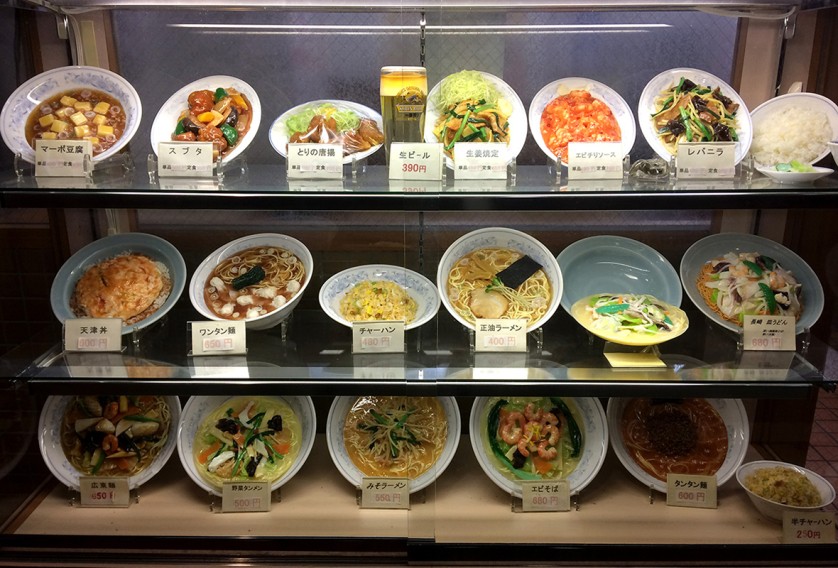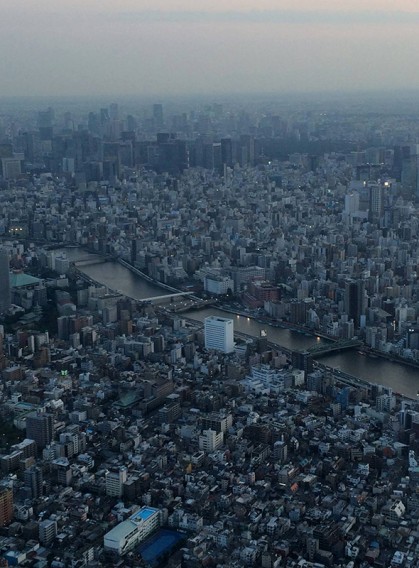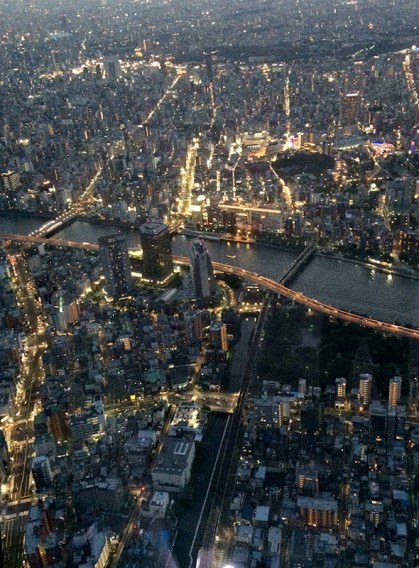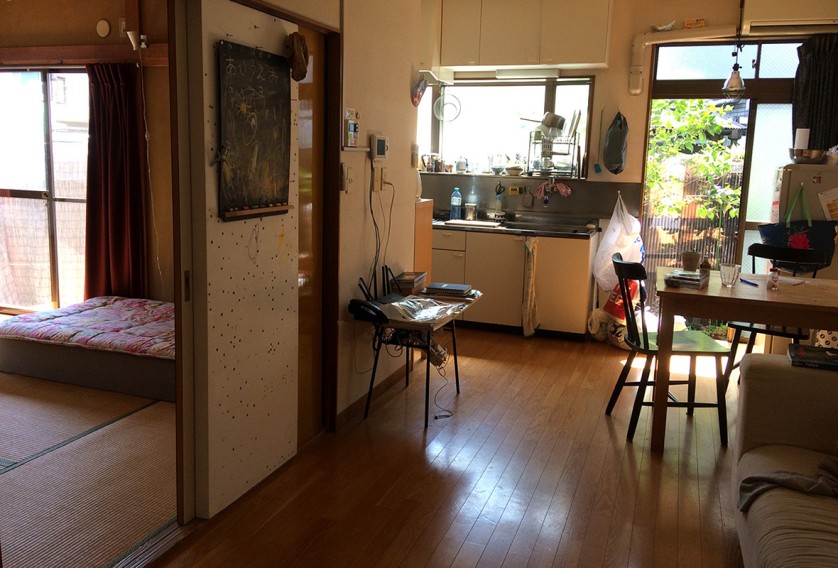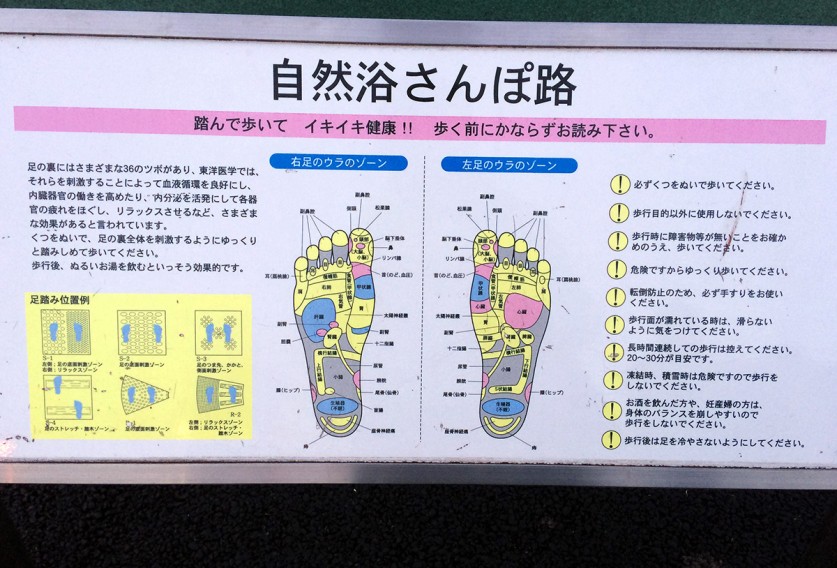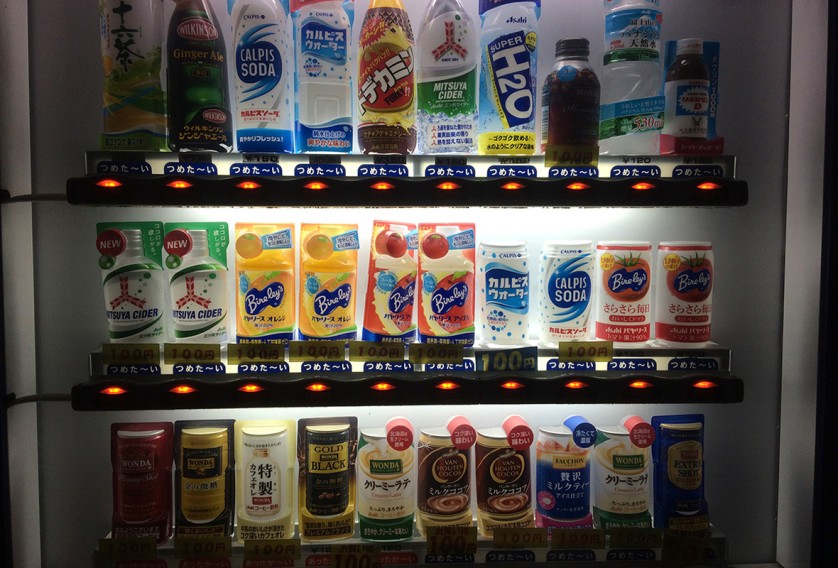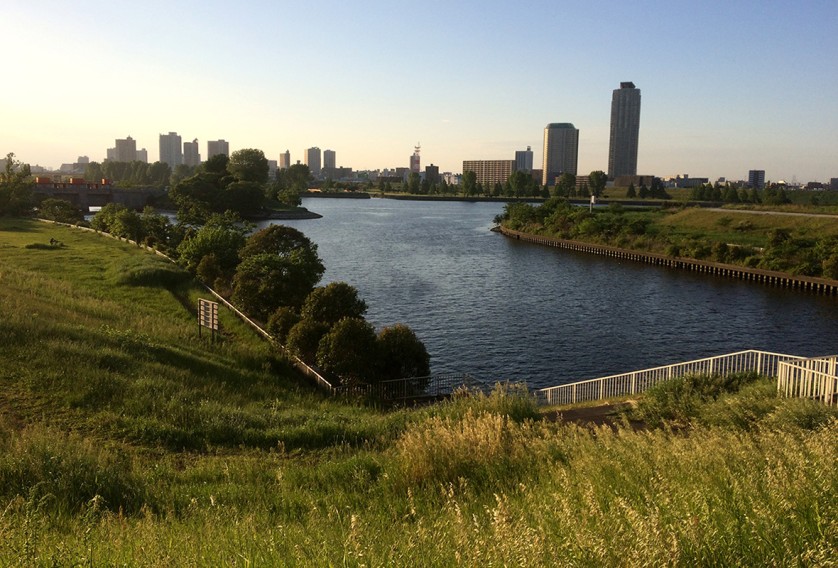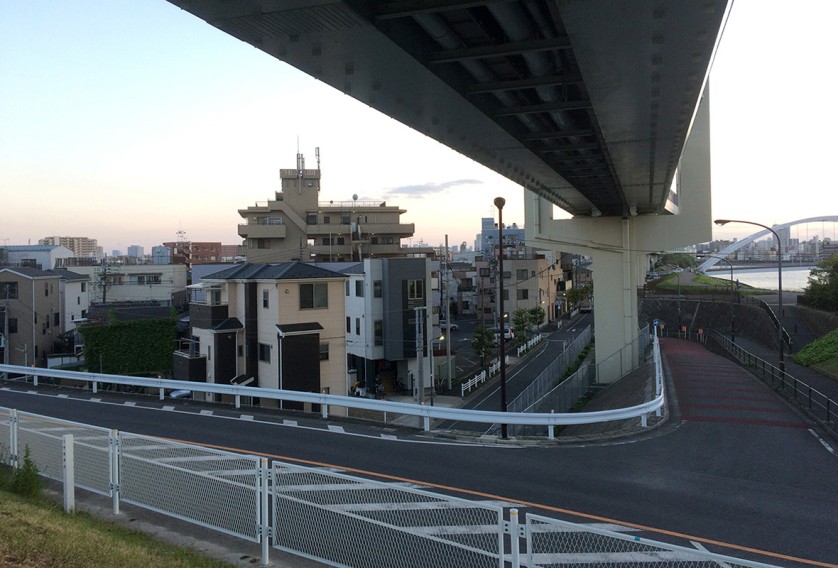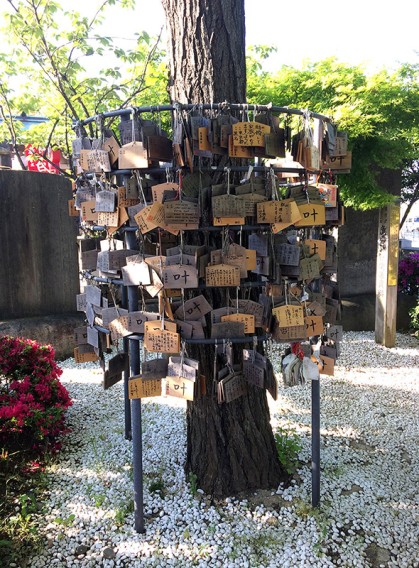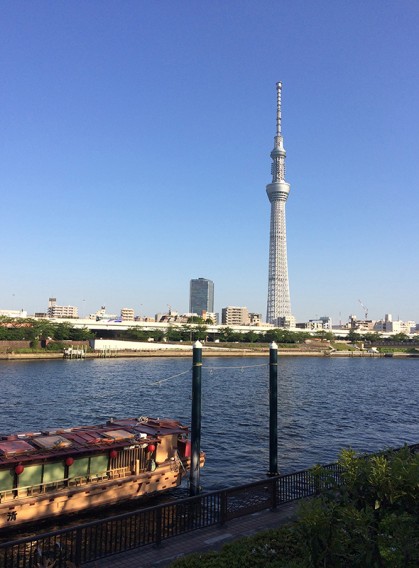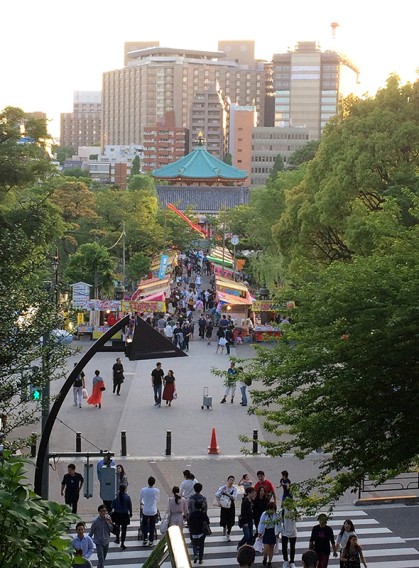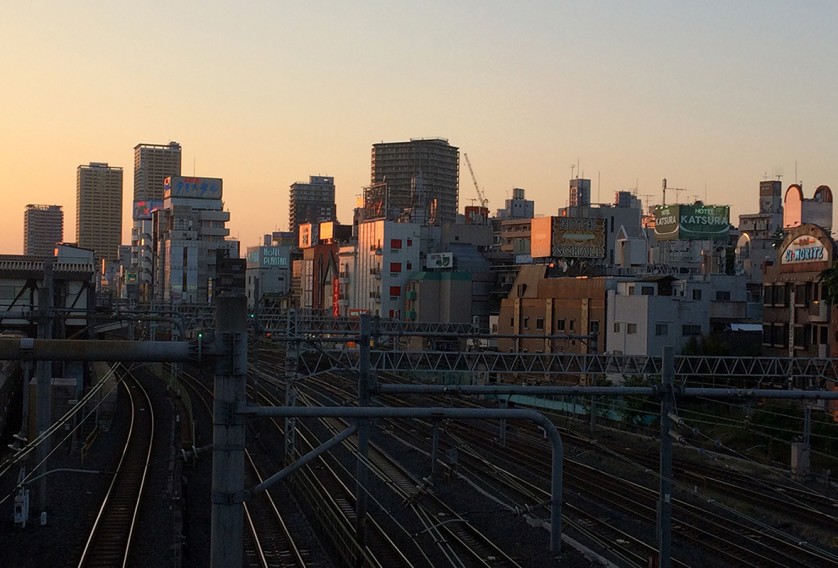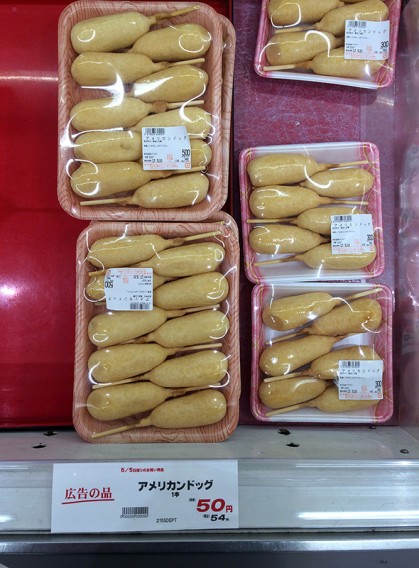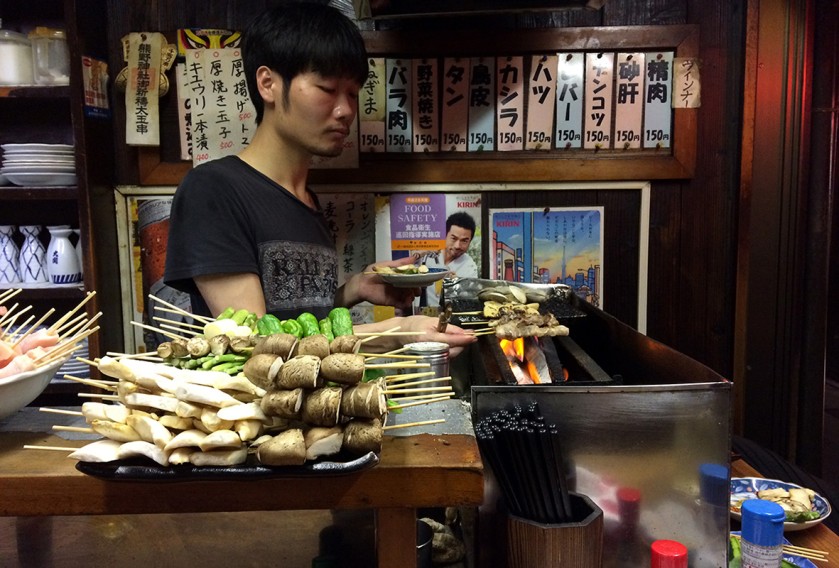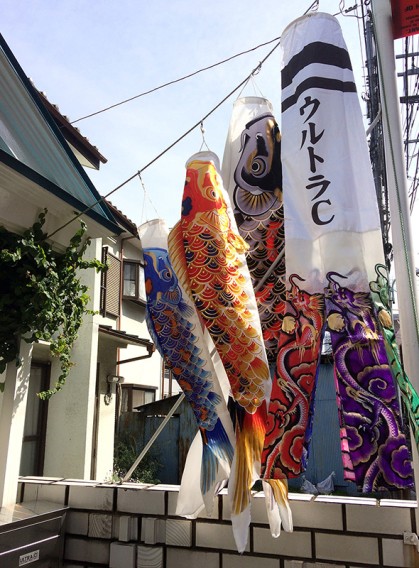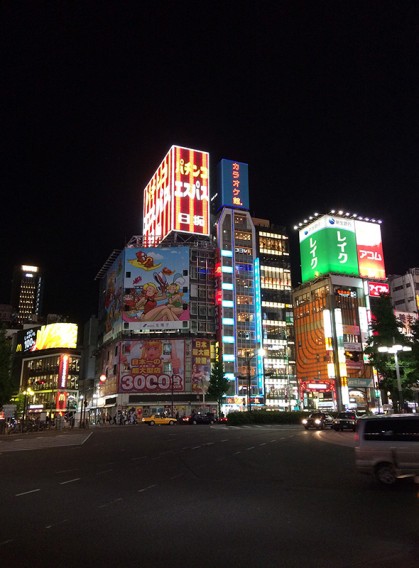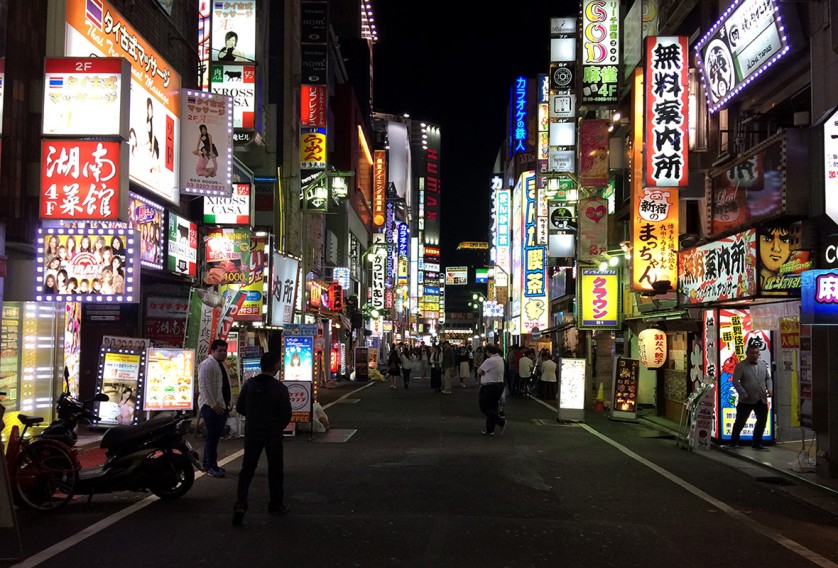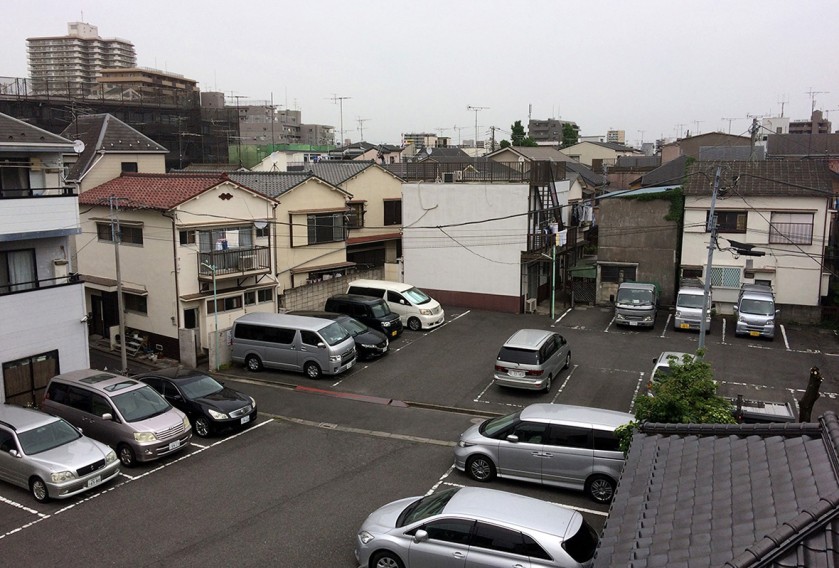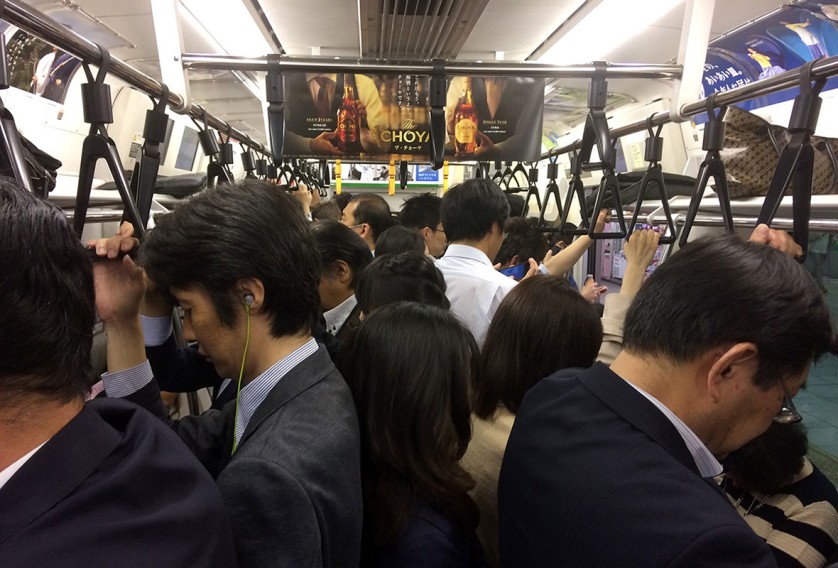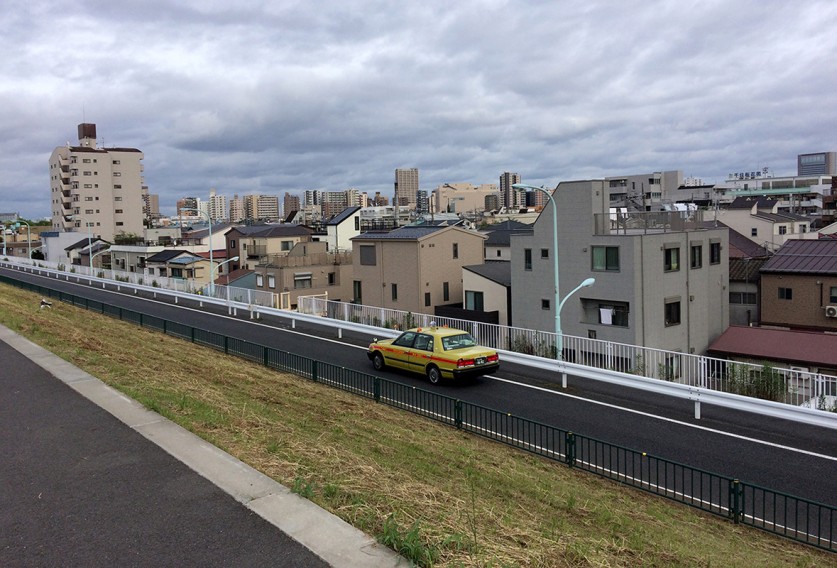Katharina Gruzei
Tokyo – the city that never ends
Tokyo surprises because, in spite of having a population of 38.1 million, the city does not feel like the biggest urban area world-wide. It seems as if the city was one step ahead of other megacities. It is neither plagued by smog from excessive road traffic nor is it a behemoth of unattractive big city buildings. Japan’s capital merges the old districts and their traditional architecture with the new high-rise neighbourhoods in a pleasant rhythm. Its varied quarters and outstanding green spaces give Tokyo a special touch and contribute to its high quality of living. The co-existence of different poles also is a symbol of the constantly contradictory “land of contrasts”.
After exploratory tours to the flashy, pumping, flickering hotspots of Tokyo, you return to the tranquil district of Arakawa with its mainly traditional buildings that presents a completely different side of Japan to you. Thus, the residential and studio building becomes a home base for exploring the city or a haven of peace.
If you do not necessarily seek company, the studio has the advantage that it is unstaffed so that the setting is informal – which I would indeed consider to be a plus in Japan. As Tokyo is one of the safest big cities world-wide, you can be out and about on your own and by night without any problems – an opportunity that you should not miss by any means, not least because of the fantastic views of the city!
| 1. | My stay in one word: |
| Wonderful! | |
| 2. | Things I miss since I am no longer there: |
| The generous and charming accommodation, Japanese food, my Japanese friends, listening to the language, the view of the city, the convenience stores, considerate manners, the varied cityscape, the beverage vending machines and the special atmosphere of Tokyo. | |
| 3. | Dos & Don'ts at this place?: |
| Dos: Sort waste materials painstakingly Slurp soups loudly Take off your shoes before entering tatami rooms Take regional trains to explore the boundaries of the city Get a Japan Travel Pass and explore Japan Yodobashi Camera, Akihabara Savour the treats of Japanese cuisine Take the Monorail, explore Tokyo by bicycle, e.g. along the rivers Watch the sunset on Rainbow Bridge Don'ts: Being noisy (except when you are at an izakaya) Blowing your nose at a restaurant Complicated meal orders Expecting people to speak English or menus in English Pushing, being impolite or impatient Thinking about radiation Taking taxis (extremely nice, extremely expensive) |
|
| 4. | Where you can buy great supplies: |
| In the studio’s immediate vicinity: Home’s – DIY market between the Sumida and Arakawa rivers (10 min from the studio building) 100 Yen Shop – Hakuyen Shop (5 min from the studio building and all over the city) Daiso – like 1€ shops (5 min from the studio building and all over the city)Specialized shops in other districts: Tokyu Hands (div.), Sekaido (Shinjuku), Itoya (Ginza) for office supplies, paper, drawing supplies, paint, art supplies... Yodobashi Camera, Bic Cam (from print paper to cameras plus analogue films!) |
|
| 5. | What you should definitely bring with you from home: |
| Herbal infusions (there are hardly any non-stimulating teas) If relevant, muesli and good olive oil (expensive), medication (language barrier) The Japanese like to make presents very much and also take pleasure in small gifts from Austria (pumpkin seed oil, chocolate, sweets…) Openness and enthusiasm for getting to know new things | |
| 6. | On art at my residency place: |
| Many institutions are worth a visit: Mori Museum (buy the ticket on the internet in advance = no queuing up), National Art Center, Top Museum, Museum of Contemporary Art (currently closed for renovations), Edo Museum, Meiji Museum… including a few smaller galleries/off-spaces such as Scai the Bathhouse, SYP Art Space, Art Trace Gallery…The institutions largely present more traditional, aesthetic or decorative art. Public art unfortunately has a strong entertainment touch. Few institutions address political topics or current socio-cultural tendencies. This can be rarely – but still – found in off-spaces or other subculture platforms. Relatively high entrance fees are widespread and there are hardly any reduced fees.There are hardly any grants for local artists and off-spaces get no financial support. Nevertheless, off-spaces exist, but they have to be funded from other sources. Many artists open their own off-spaces and finance them together, e.g. from their bread-and-butter jobs. This is also one of the reasons why entrance fees are common in Tokyo or why galleries and off-spaces are rented out. In the warmer season, there are many art festivals outside the city in the different prefectures.It is also interesting to see the other residencies in the city and talk with the artists there, e.g. Tokyo Wonder Site (now TOKAS), 3331 Arts Chiyoda, Art Center Ongoing. If you have time you should also go to Yokohama and explore the arts scene there.I experienced the scene as very friendly and open. Simply attend openings and approach people. As a European, you are also perceived as somehow “exotic”. Some Japanese artists studied abroad and speak English well. Many are happy to establish contacts and exchange ideas with artists from abroad. As people in Japan are rather shy and reserved, you should bring along much own initiative for the residency and preferably establish contacts in advance. | |
| 7. | Around the studio – this is where I go shopping, drink a coffee and get the best lunch specials within walking distance: |
| For adventurous people, there is an original izakaya (Japanese pub) directly in the Machiya metro station (below the Sunpop shopping centre). The staff does not speak English, the tone is somewhat rough, but amusing and there is no English menu – just order and try. The dishes are great, and the prices are also o.k.There is a very good noodle place with its own noodle production calledつけ麺 らーめん まる文to the south of the studio building. Ramen with tomato sauce is particularly delicious.The Life supermarket is a 5-minute walk from the studio building. A less expensive grocery store is in the basement of the DIY market between Sumida and Arakawa. Both shops also have ready-to-go food (sashimi, sushi, noodle and rice dishes) that tastes good and is of a much higher quality than in Austria. At 7 p.m. prices are reduced sharply. | |
| 8. | Where I like to spend the evening (dinner, drinks and best sound): |
| ... at the octopus bar 上木家between 24 hours girls and bunny bar. :)It is in the first block on the right-hand side of the street when you walk from the Machiya metro station to the studio building. There is inexpensive draught beer, wonderful takoyaki (okonomiyaki with octopus) and a small table on the pavement that is almost always vacant (in Tokyo there are only a few places where you can eat and drink in the open air).Simply forget about drinking coffee and switch to matcha / green tea!The views from Tokyo’s sky-view bars are well worth seeing. I really liked the sky-view bar Bellovisto at the Cerulean Tower in Shibuya (Tokyu Hotel).If you feel like electronic music and dancing, the Oath Club could be the right place for you. The atmosphere of this club very much depends on the evening. One evening, there are only Japanese there, while next time there are almost only Western guests stranded in Tokyo on a business trip or tourists. The club has local DJs, its prices are very much o.k. and it has a charming view of the urban expressway. You can watch how Tokyo wakes up while you dance. | |
| 9. | What I would have liked to know about the studio already at the start of my residency: |
| In fact, you are very well prepared thanks to the predecessors’ reports. I suspect that strict vegetarians may have problems when dining out. They would have to plan for often cooking themselves. There are wonderful vegetarian snacks, but dashi (fish stock) is the basis of most Japanese dishes. However, you can also find vegetarian or vegan restaurants online. |
Website resident: katharinagruzei.com

